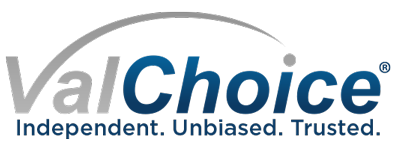For most families, their home is their most valuable asset. However, we all have many demands for the precious dollars we have to spend each month. Therefore, it’s tempting to limit the amount of coverage on our home in order to keep the price down. Alternatively, some homeowners simply shop based on price, giving their business to the lowest priced option. This post takes a different view. We believe the most valuable asset deserves the best homeowner insurance. We answer the questions of what does that cost and how does a homeowner find the best insurance?
Start by finding out how good your insurance is. Check both your car and home insurance. Just click the buttons below.
Who are the best homeowners insurance companies?
Some people just want to know the best homeowners insurance companies. Forget the rest of the details. The logic of this approach is that buying from the best companies, will help when filing a claim. This is a viable approach to buying insurance. However, what people don’t know is who the best homeowners insurance companies are. ValChoice rates every company company in the industry so you can know which are the best. Ignore the advertisements. They’re meaningless. Use ValChoice ratings. Just click the buttons below.
How do people end up being underinsured?
While your home may be fully insured when you initially made the purchase, that can change. Reasons leading to being underinsured include:
- Adding on or remodeling, but not updating the insurance coverage
- Increases in building costs
- Purchasing more content or valuable content
- Being underinsured from the beginning
How do I know what insurance should cost?
Insurance is purchased based on a dollar amount. To be fully insured, that dollar amount must cover the cost of rebuilding and refurnishing the home.
Beyond having enough insurance, the type of insurance you have also matters. The two most common coverage types include: Actual cash value and replacement-cost coverage. A description of each is provided below.
The most basic form is actual cash-value coverage, which pays a reduced amount for items and structures, reflecting depreciation and wear and tear. Rather than a new couch, you would receive enough money to buy a replacement for the 10-year-old used couch you just lost. Premiums on actual-cash value policies tend to be lower.
Replacement-cost coverage provides more extensive protection. Replacement-cost coverage is frequently offered in a form that covers 25 percent above the dollar limits specified in a policy.
But even replacement-cost might not be enough to rebuild in full. Some insurers offer guaranteed replacement-cost coverage, for a higher premium, that would foot the entire bill of reconstruction. But a lot of insurers don’t offer this open-ended protection, or do so only on a grandfathered basis for their longest-standing policyholders.
Want to know what a fair price is for insurance on your home? We can also let you know a fair price for auto insurance. Click he buttons below to find out.
How much home insurance is the right amount?
It’s important to remember that following catastrophic events, prices for building materials increase, making the cost of rebuilding greater than in normal times. Also, some cities require homes be built using energy-saving features that are more costly.
In summary, when selecting the amount of property-insurance coverage,
- Consider the cost to replace only the dwelling’s structure — not the market value of the entire property.
- Be aware of special requirements for more expensive building materials the city may impose
- Determine if you prefer actual-cash-value or replacement-cost coverage
- Make sure you have adequate contents coverage


No comments yet.